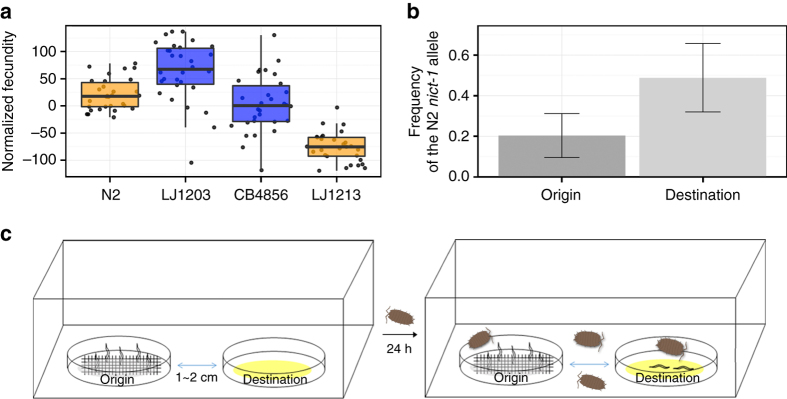Fig. 3.
The nict-1 QTL controls a fitness trade-off and species dispersal on isopods. a Brood sizes of N2, CB4856, LJ1203 (nict-1 CB4856 > N2), and LJ1213 (nict-1 N2 > CB4856) are shown as Tukey box plots colored based on the nict-1 genotype. The horizontal line is the median, and the box denotes the 25th to 75th quantiles of the data. The vertical line represents the 1.5 interquartile range. All four strains were scored in 30 biological replicates, except for LJ1213 where only 29 biological replicates were scored. b The mean N2 nict-1 QTL allele frequencies before (origin) and after (destination) transmission competition assays are plotted. Error bars are standard deviations. c The experimental scheme of the transmission competition assay is shown. Transmission competition assay chambers contain two nematode culture plates. The “origin” plate contained a mixture of dauer animals from the CB4856 and LJ1213 (nict-1 N2 > CB4856) strains and was covered with medical gauze to facilitate nictation. The “destination” plate was placed 1–2 cm away with no nematodes on this plate. Terrestrial isopods were added to the chamber and allowed to roam freely for 24 h. Nematodes depend on the isopods for transfer to the “destination” plate from the “origin” plate because no transfer was observed without isopods presence. Eleven different biological replicates were scored

